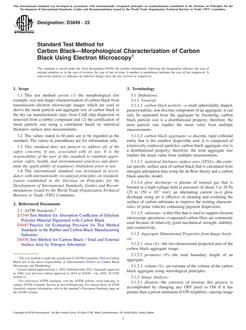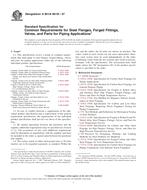1.1 This test method covers a calculation procedure for converting data obtained by Test Method D972 to apparent vapor pressures and molecular weights. It has been demonstrated to be applicable to petroleum-based and synthetic ester lubricating oils, at temperatures of 395 to 535K (250 to 500°F). However, its applicability to lubricating greases has not been established.
Note 1 – Most lubricants boil over a fairly wide temperature range, a fact recognized in discussion of their vapor pressures. For example, the apparent vapor pressure over the range 0 to 0.1 % evaporated may be as much as 100 times that over the range 4.9 to 5.0 % evaporated.
1.2 The values stated in SI units are to be regarded as the standard. In cases in which materials, products, or equipment are available in inch-pound units only, SI units are omitted.
1.3 WARNING-Mercury has been designated by many regulatory agencies as a hazardous material that can cause central nervous system, kidney and liver damage. Mercury, or its vapor, may be hazardous to health and corrosive to materials. Caution should be taken when handling mercury and mercury containing products. See the applicable product Material Safety Data Sheet (MSDS) for details and EPA's website-http://www.epa.gov/mercury/faq.htm-for additional information. Users should be aware that selling mercury or mercury containing products into your state or country may be prohibited by law.
1.4 This standard does not purport to address all of the safety concerns, if any, associated with its use. It is the responsibility of the user of this standard to establish appropriate safety and health practices and determine the applicability or regulatory limitations prior to use. For specific warning statements, see 6.2, 7.1, 8.2, and Annex A2.
Product Details
- Published:
- 10/01/2010
- Number of Pages:
- 6
- File Size:
- 1 file , 120 KB
- Redline File Size:
- 2 files , 220 KB


